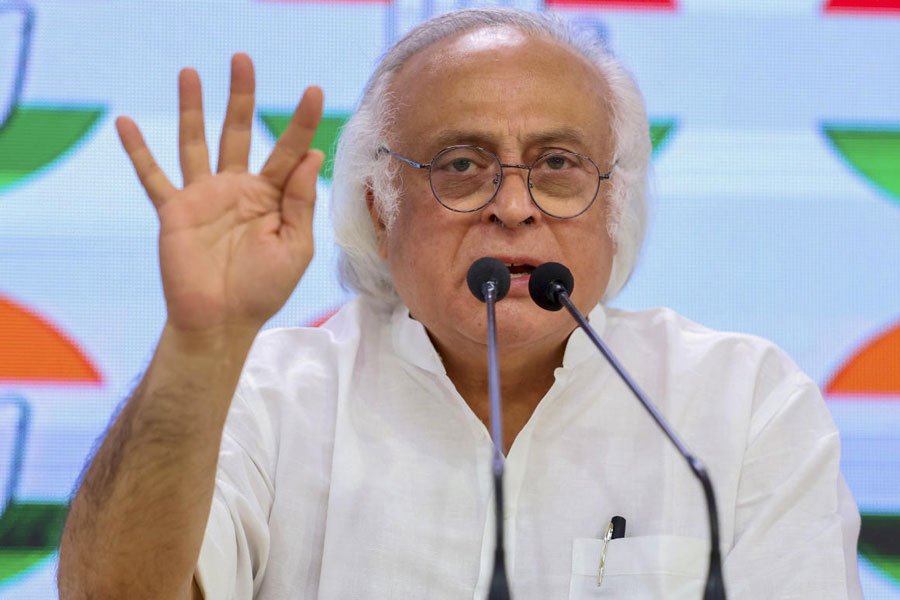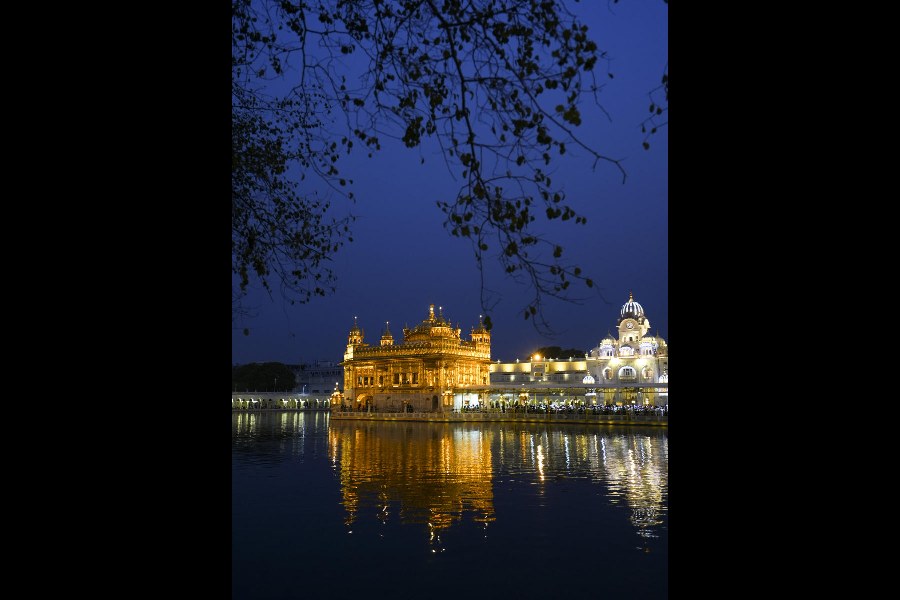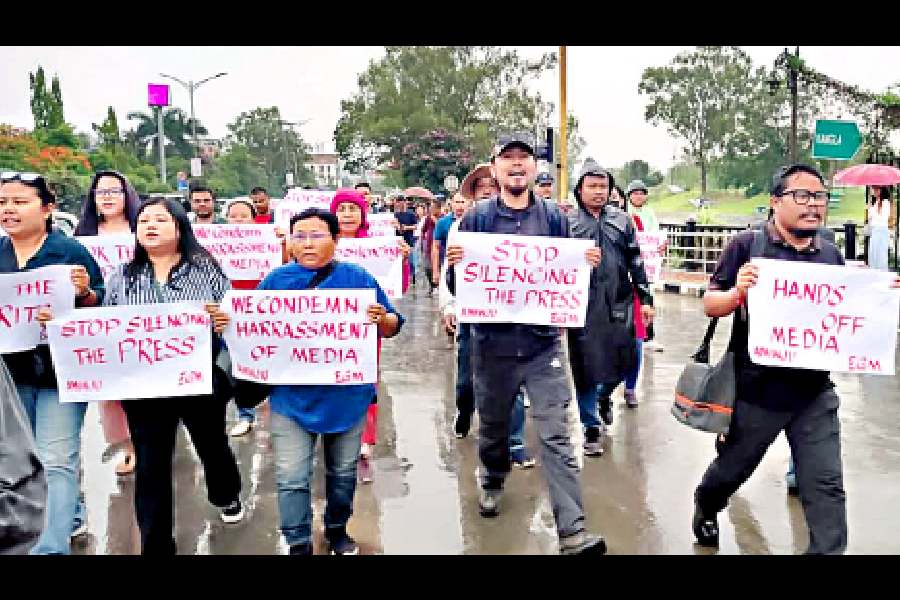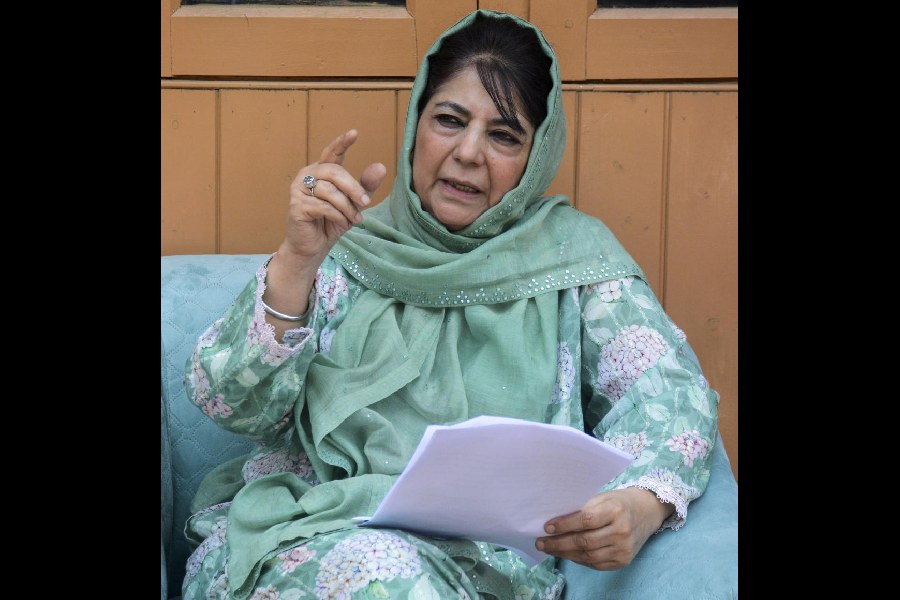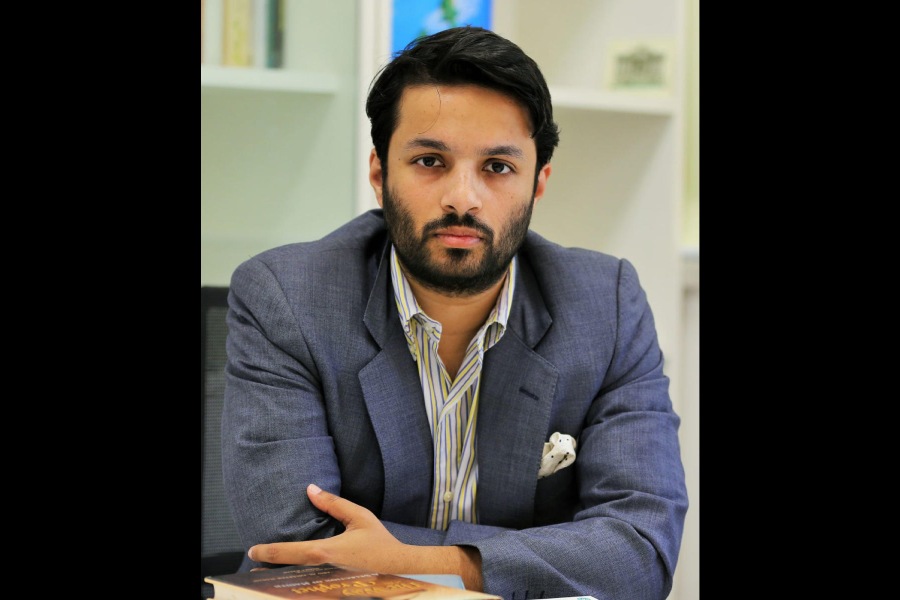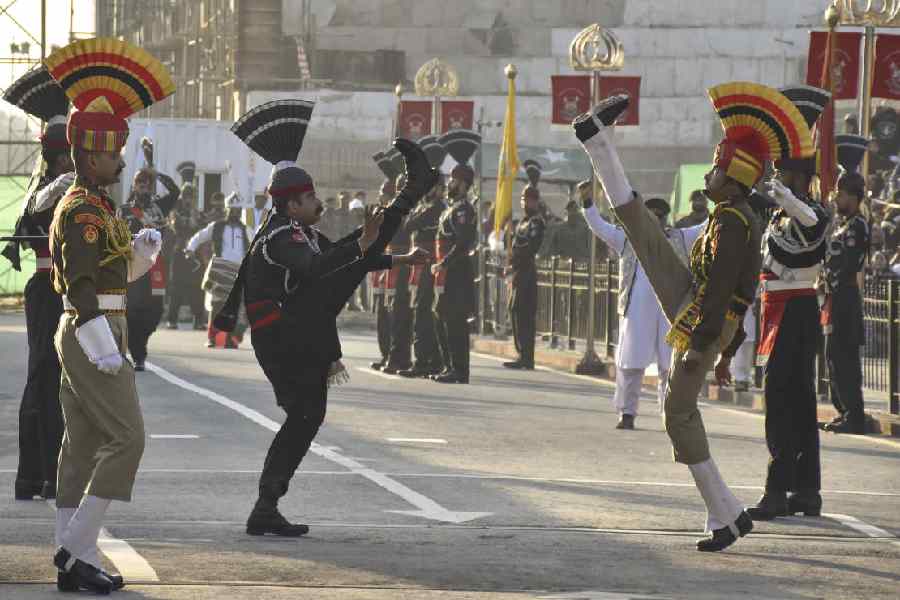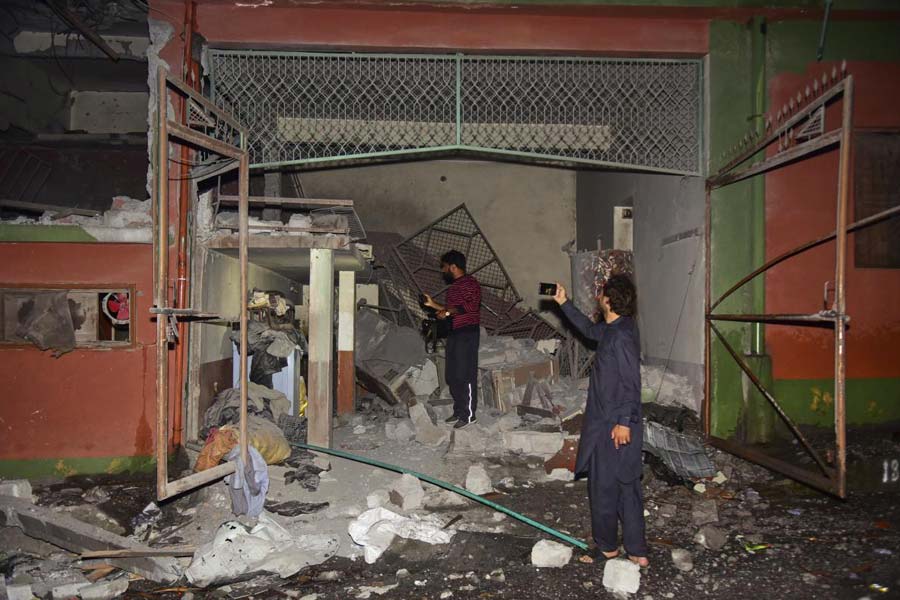New Delhi, Sept. 23: Cutting through the guns-versus-butter debate, India today signed a cheque for 7.87 billion euros (around Rs 58,800 crore) for its most expensive single military purchase - 36 Rafale fighter jets.
The payment will be staggered over six years.
If the total cost is to be divided by the number of aircraft contracted the figure would be more than Rs 1,610 crore a plane. But the total cost includes separate components such as weapons, training and setting up of infrastructure.
Defence minister Manohar Parrikar has signed the dotted line of an inter-government agreement with his French counterpart Jean Yves le Drian here, putting the seal on a deal that originated in the late 1990s.
This would be India's first contract for a full-fledged fighter aircraft since the Sukhois were contracted in 1997, barring the advance trainer jet Hawk (contracted in 2004), in nearly two decades.
"This is a highly potent aircraft and will give the Indian Air Force a technological edge over many others," Parrikar said after the signing.

But the defence ministry's efforts today after the deal was done were directed at making a convincing case on the hugely expensive purchase. Ministry sources reasoned that the total cost of the Rafale package, complete with the aircraft, the infrastructure for them, the weapons, the training and customised systems was so good that it had already resulted in savings of 328 million euros because India drove a hard bargain.
The sources were comparing this notional saving to the price that would have been negotiated if the government had persisted with the original selection of the Rafale. The Rafale was the Indian Air Force choice through the medium multi-role combat aircraft (MMRCA) competition announced in 2007. It had emerged as the lowest bidder beating the Eurofighter Typhoon after the two were chosen from a field of six combat jets.
But the comparison is difficult because the MMRCA project envisaged the acquisition of 126 jets of which 18 would be bought in fly-away condition and 108 were to be made in India. That project was junked last April when Prime Minister Narendra Modi announced during his visit to Paris that India would prefer a direct purchase of 36 Rafales that would be ready to fly. When the MMRCA project was announced in 2007 under the UPA regime, the cost of the total acquisition was estimated to be about 10 billion $.
The purchase of 36 readymade Rafales after today's contract would be 7.87 billion euros or about $8.6 billion.
The Indian Air Force had projected the requirement for such an aircraft not only because the depletion in its fleet of fighters that are ageing. It had also said that the aircraft must have the capabilities that the IAF wanted to fulfil the operational directive from the government to be ready for a two-front war. The directive was in the context of the security establishment perceiving China and Pakistan to be its two main adversaries.
The Rafale is a twin-engined delta-winged aircraft. The fighter is in service with the French Armee de'l'air. The weapons package for the version customised for India would include advanced beyond visual range Meteor air-to-air missiles with a range of more than 100 kms, the Scalp air-to-ground missile with a range of 300km. Its detection and survival features would include Active Electronic Scanned Array radar.
Defence ministry sources specifically pointed to the Meteor as giving a huge technological edge to the IAF among most air forces in Asia. The Pakistan Air Force has something comparable with its AIM-9x Sidewinders. The Meteor BVRAAM is made by MBDA originally for France, Germany, Italy, Spain, Sweden and the UK. It has an active radar seeker, two-way data link communication and a Ramjet motor. MBDA claims it can engage a wide range of targets in air with pinpoint accuracy.
For India, French maker Dassault Aviation is required to deliver the first of the jets in 36 months, that is September 2019, and complete deliveries in 30 months in 2022.
The French government has stood as a guarantor against defaults.
Dassault and its partner firms have also undertaken to ensure that 75 per cent of IAF's Rafale fleet (that is at least 27 of the 36 aircraft after all deliveries) are ready for war at all times.
Serviceability of fighter aircraft is a huge issue with the IAF's fighting fleet. Its current frontline fighter, the Sukhoi 30 Mki had a serviceability percentage that has risen from just about 46 per cent to about 55 per cent in two years.
What is the cost of the Rafale for the Indian Air Force?
Just the bare single-seat Rafale will cost Euro 91 million each. The twin-seat trainer version (that can also be flown by just one pilot) would cost Euro 94.7 million each. India has contracted 24 single-seaters and eight twin-seaters.
What else does the total cost of Euro 7.87 billion (Rs 58,800 crore approx or $ 8.6 billion approx) include?
The total cost includes 3.42 billion euros as the cost of the bare planes; 1.8 billion euros for associate supplies for infrastructure and support; 1.7 billion euros for India-specific changes to the plane; 700 million euros for the additional weapons package and 353 million for performance-based logistics support.
Why did the IAF choose the Rafale?
Apart from trying to cope with its depleting combat jet strength, the IAF wanted a twin-engined fighter that could fly higher than its Sukhois as well as deliver air-to-air and air-to-ground weapons. The Rafale would be assigned a strategic role in the IAF’s perspective of the operational directive to it from the government to be ready for a two-front war with potential adversaries Pakistan and China.
Is the number of 36 enough?
No. The IAF had originally projected a requirement of 126 such aircraft, with the possibility that the numbers could be scaled up to 210.
Will India then contract more Rafales?
The current contract does not have an options clause, said defence ministry officials, that would permit the IAF to order more aircraft after the 36 have been delivered. To buy an additional number a fresh contract would have to be negotiated. “Of course we would been more twin-engined aircraft,” said defence ministry sources. India is also looking at a choice of other aircraft that includes the Saab Gripen (Sweden), the F-16 (Lockheed Martin, USA) and the F-18 Super Hornet (Boeing, US). It has not yet taken a call.
How does the Rafale compare with the Sukhoi 30 Mki?
♦ Defence ministry sources said the Rafale would have a much shorter “turnaround time” than the Sukhoi 30 Mki. For example, the engines of the Rafale could be changed in 30 minutes, allowing up to five sorties in a day. In the Sukhoi this takes up to eight hours often allowing barely two or three sorties in a day.
♦ The Rafale has a flight radius of 780-1055km depending on the payload. For the Sukhoi 30 Mki this is 400-550 km. Both aircraft are capable of being refuelled in mid-air and thus extending their range.
♦ Weapons such as the Meteor and the Scalp give the Rafale a stand-off capability. This would enable, for instance, the missiles to be fired at longer targets while the aircraft loiters in its own airspace.


